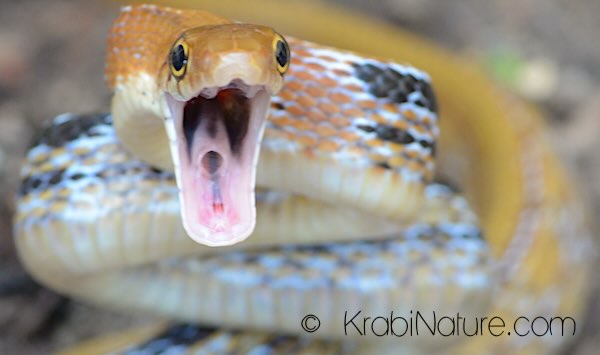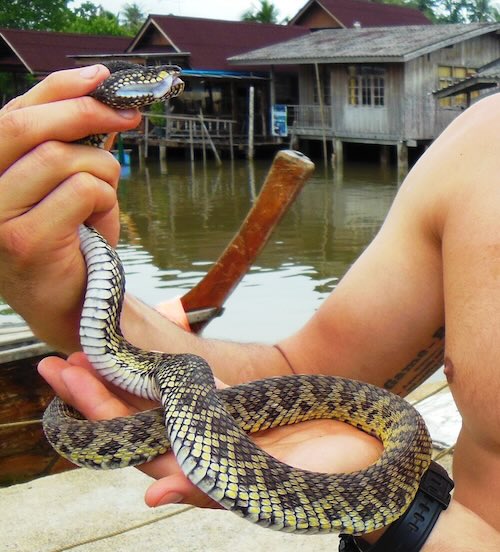Ant Species in Thailand
Page updated 8 March 2025
The Ant Problem in Thailand
Summary:
- Ant infestations in Thailand are extremely common, especially in homes where food is left out.
- Thais generally ignore ants, but for foreigners, they can be a serious annoyance.
- Several different species of ants invade homes, some biting painfully while others swarm food.
- The article explores different types of ants, including Sugar Ants, Longhorn Crazy Ants, Fire Ants, and Black Ants.
- Some ants, like the Fire Ants, deliver painful bites that later become itchy and swollen.
- Ants in Thailand are persistent and often don’t recognize danger when their colony members are being killed.
- The best way to control ants is through cleanliness, sealing food, and possibly using repellents or insecticides.
The Reality of Living with Ants in Thailand
If you’ve ever lived in or visited Thailand, chances are you’ve had a run-in with ants. Not just a few stray ants marching across the kitchen counter—no, we’re talking about full-blown invasions that can happen anywhere, including your bed. Many expats and tourists alike find themselves waking up in the middle of the night covered in bites, all because a few crumbs from last night’s snack found their way onto the sheets.
Thais, on the other hand, are far more tolerant of ants. They simply don’t notice them or don’t care. For a Westerner, seeing trails of ants leading from a forgotten plate on the floor can be unsettling. But for a Thai person, it’s just another part of life. They’re used to sharing their space with these tiny invaders and generally don’t see them as a problem.
For those of us who aren’t as accustomed, let’s dive into the different types of ants you might encounter in Thailand and how they operate.

8 Annoying Ants You’ll Find in Thailand
1. Sugar Ants (Ghost Ants)

These are tiny, nearly transparent ants that love anything sweet. They can often be found on restaurant tables, sneaking around unnoticed. Despite their size, their bites can be surprisingly painful, and some people react with itchy, swollen welts.
Ghost ants are slow-moving and not very bright. If you start killing them, they’ll just keep coming, oblivious to the danger. You can wipe out hundreds in a few minutes, and they’ll still send in reinforcements. The best way to get rid of them? Wipe down surfaces thoroughly and never leave sugary foods out in the open.
2. Longhorn Crazy Ants (Psycho Black Hyper-Speed Ants)

These small black ants are incredibly erratic. Unlike Sugar Ants, they don’t march in a straight line toward food—they zigzag, pause, then dart off in random directions. They seem to have no clear mission until they suddenly swarm a dead insect or food scrap.
If you try to squash one, it will immediately go into turbo mode, running unpredictably and making it nearly impossible to hit. Squash one, and more will show up within seconds. Interestingly, these ants are frequently eaten by geckos that wait by their nests for an easy meal.
3. Fire Ants (Red Devils)
If you’ve ever woken up with painful bites, you were probably visited by Fire Ants. These reddish-brown ants are similar to the fire ants found in the southern United States. They deliver a burning sting that can later become itchy and inflamed.
Fire Ants are relentless when it comes to food. They particularly enjoy fatty and greasy foods like fried chicken, potato chips, and pastries. If you leave food unattended for even a short time, they’ll be on it.
Interestingly, Fire Ants seem to understand danger better than other species. If they see their fellow ants getting killed, they’ll retreat and stop coming for a while—unlike Ghost Ants, who just keep marching into battle.
4. Large Black Ants (Ochetellus)
These ants are the most “normal” looking to people from the West. They are larger than Fire Ants, move with purpose, and don’t appear as frantic as the Crazy Ants. They won’t attack people unprovoked, but if you start killing them, they will bite in self-defense.
Unlike Fire Ants, these ants don’t retreat immediately. They might scatter at first but will regroup and try to fight back if provoked. While their bites aren’t as painful as Fire Ants, they can become annoying if you get bitten multiple times.
How to Prevent Ant Infestations in Thailand
Since Thai homes often have open windows, gaps in doors, and plenty of food sources, ants find it easy to invade. If you don’t want to wake up covered in them, here are some tips:
- Keep Food Sealed – Even tiny crumbs can attract ants. Store food in airtight containers and wipe down surfaces after eating.
- Clean Regularly – Sweep and mop floors daily to remove food particles.
- Use Ant Repellents – Natural solutions like vinegar, lemon juice, or cinnamon can deter ants. For serious infestations, chemical ant bait stations work well.
- Take Out Trash Frequently – Never leave food waste in an open bin overnight.
- Check for Entry Points – Seal cracks and gaps in walls and floors where ants might be entering.
The Strange Psychology of Ants
What’s fascinating about Thai ants is how some species don’t recognize danger, while others retreat when they sense a threat. Ghost Ants and Crazy Ants will march to their deaths without hesitation, while Fire Ants and Large Black Ants have a more cautious approach.
It’s easy to see parallels between ants and human behavior. Some of us blindly follow routines without questioning them, much like Ghost Ants. Others, like Fire Ants, know when to retreat and when to attack. And then there are the Crazy Ants—chaotic, unpredictable, and seemingly without purpose until something catches their attention.
Think About
Ants are an inevitable part of life in Thailand. Whether you live in a rural village or a high-rise condo, you’ll encounter them at some point. Learning to deal with them is just part of the experience.
While most Thais ignore ants entirely, foreigners might find them frustrating. But with a bit of vigilance and cleanliness, you can keep them at bay. Just remember—never eat chips in bed, or you might wake up with a few uninvited guests crawling across your skin!
Join us for a night walk in Krabi Rainforest! Good price and many animals and insects to see!
Those are the 8 types of ants I know about here in Thailand. Are there more? Probably hundreds more. Thailand is really a great place if you love wildlife. Stop looking at the nightlife and look at the wildlife!
Join us for a night walk in Krabi Rainforest! Good price and many animals and insects to see!



